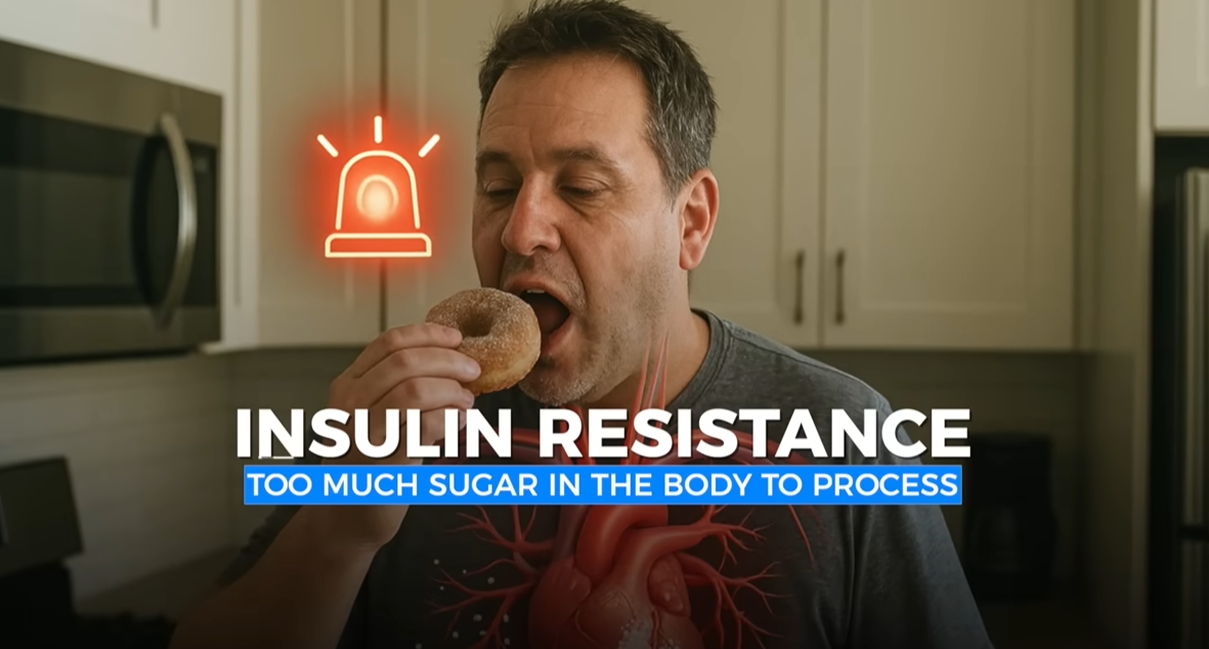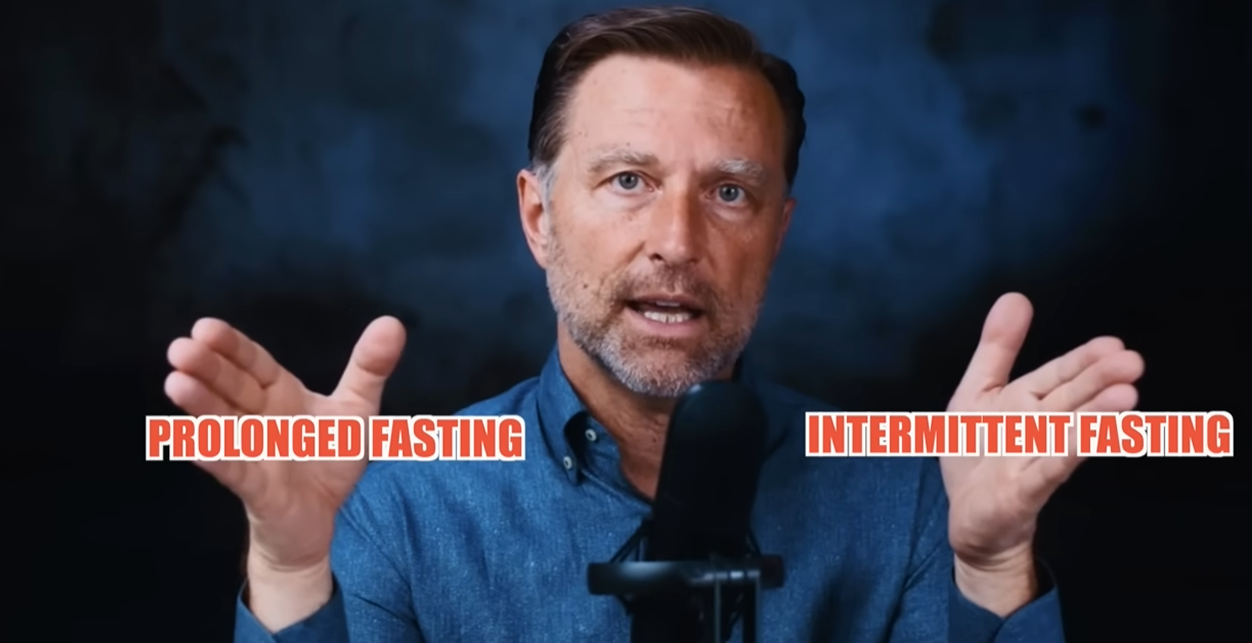In a culture where we’ve been taught that constant nourishment is the path to healing, the idea of not eating for three days can feel radical — even dangerous. But emerging science tells a different story, one that flips the conventional wisdom on its head.
As a nutritionist with over 20 years of experience in metabolic health, chronic disease management, and clinical fasting protocols, I’ve seen firsthand the transformational power of prolonged fasting. While skipping meals for a few hours (intermittent fasting) is now mainstream, going without food for 24–72 hours can unlock even more profound physiological changes — from cellular regeneration to immune rejuvenation.
Let’s explore what really happens when you fast for three days — and how to do it safely.

Why We Get Sick: The Hidden Role of Insulin Resistance
At the root of nearly every chronic illness — from type 2 diabetes to heart disease, obesity, and even some forms of cancer — is a metabolic dysfunction called insulin resistance. This condition occurs when your body becomes desensitized to insulin due to frequent spikes caused by eating too often, especially carbohydrates.
It’s not that we eat too much food in one sitting — it’s that we eat too frequently. Every time you eat, especially high-glycemic foods, insulin rises. Over time, this constant elevation blocks cells from effectively using fuel, leading to fatigue, weight gain, and inflammation.
Prolonged fasting helps break this cycle by giving the body a break from insulin stimulation — allowing cells to reset and become sensitive again.
What Is Prolonged Fasting?
Prolonged fasting refers to fasting periods longer than 24 hours — typically 36, 48, or 72 hours with water only (no caloric intake). While intermittent fasting (such as 18:6 or 16:8) is an excellent starting point, extended fasts accelerate the benefits dramatically.
Let’s break down what happens at different milestones during a 72-hour fast.
18–24 Hours: Lower Insulin, Begin Fat Burning
After roughly 18 hours without food:
- Insulin levels drop significantly
- Stored glycogen (sugar stored in the liver and muscles) begins to deplete
- The body starts switching from sugar to fat as its primary fuel
- Ketones, a clean-burning fuel source made from fat, begin to rise in the blood
You may notice a clearer mind, reduced bloating, and even a drop in waistline measurements — although initial weight loss is mostly water loss as glycogen is used up.

24–48 Hours: Entering Deep Ketosis and Fat Loss
By day two:
- Ketone production increases significantly, fueling your brain and muscles
- Autophagy, the body’s self-cleaning process, ramps up (more on that shortly)
- Human growth hormone (HGH) levels can surge by up to 2,000%, preserving muscle mass and enhancing recovery
- Inflammation begins to decrease across the body
Contrary to the myth that fasting causes muscle loss, the spike in HGH and ketones helps preserve lean tissue while enhancing fat metabolism.
48–72 Hours: Autophagy, Immune Rejuvenation, and Cellular Repair
This is where the magic really happens.
At this stage:
- Autophagy goes into overdrive. This cellular recycling process removes damaged proteins, old cells, and even precancerous tissue.
- Immune regeneration begins: Your body starts to reset its white blood cell population, a natural reboot of the immune system
- Latent viruses (like Epstein-Barr and herpes) may be suppressed as intracellular pathogens are broken down for fuel
- Brain benefits soar — ketones fuel neurons more efficiently than glucose, enhancing focus, mood, and mental clarity
Prolonged fasting is one of the only natural methods that can stimulate stem cell production, enhance tissue repair, and support neurological regeneration — all without expensive therapies.
The Power of Autophagy: Your Body’s Inner Detox System
Autophagy is one of the key benefits of prolonged fasting. It’s a natural cellular process where your body breaks down old, dysfunctional components and uses them to build new, healthier cells.
Think of it as a “self-cleaning oven.” When you fast, your body scavenges waste materials — like misfolded proteins, damaged mitochondria, and viral particles — and recycles them.
You can’t stimulate autophagy simply by taking supplements or eating “clean.” It only happens when nutrient intake stops, especially carbohydrates and protein.

How to Do a 3-Day Fast Safely and Effectively
If you’re considering a 72-hour fast, preparation and recovery are key. Here’s how to do it the right way:
✅ During the Fast:
- Drink plenty of water — at least 2–3 liters per day
- Include electrolytes: Add unrefined sea salt (1 tsp daily), plus magnesium and potassium if possible
- You may consume black coffee or unsweetened herbal tea, as these do not break the fast
Expert Tip: Feeling fatigued or lightheaded? A pinch of sea salt under your tongue can restore balance quickly.
❌ What Breaks a Fast?
Anything with calories will technically end a fast. Avoid:
- Bone broth (only consume it during the refeeding phase)
- Sugary drinks or artificial sweeteners
- Protein powders or supplements (unless medically necessary)
How to Break a 3-Day Fast: Refeeding Done Right
Refeeding is just as important as the fast itself. Ending a prolonged fast too abruptly with a heavy meal — especially one high in carbohydrates — can cause serious digestive distress and even refeeding syndrome in rare cases.
✅ Refeeding Protocol:
- Start with bone broth or a small serving of lightly steamed vegetables
- Wait 1–2 hours, then add an easy-to-digest protein like an egg or soft-cooked fish
- Gradually build up to larger meals over 12–24 hours
- Avoid refined carbs, sugar, and heavy fats for at least a day

Is Prolonged Fasting Right for You?
Prolonged fasting is a powerful tool — but not for everyone. If you’re pregnant, breastfeeding, underweight, or have a history of eating disorders, consult with a medical professional or registered nutritionist before attempting an extended fast.
However, for most healthy adults, even one 3-day fast every few months can provide:
- Enhanced fat loss (especially around the abdomen)
- Improved insulin sensitivity
- Reduced inflammation
- Stronger immune response
- Sharper cognitive performance
- Long-term disease prevention
Final Thoughts: Your Body Knows How to Heal — If You Let It
We often look for healing through more food, more supplements, more interventions. But sometimes, true healing comes from doing less — from stepping away from the plate and giving the body space to reset.
Prolonged fasting isn’t about deprivation. It’s about restoration — giving your metabolism, hormones, and cells the chance to repair, regenerate, and thrive.
Interested in using fasting as part of a personalized wellness plan? Reach out to schedule a consultation or browse our expert articles on metabolic health, clean eating, and sustainable weight loss.



